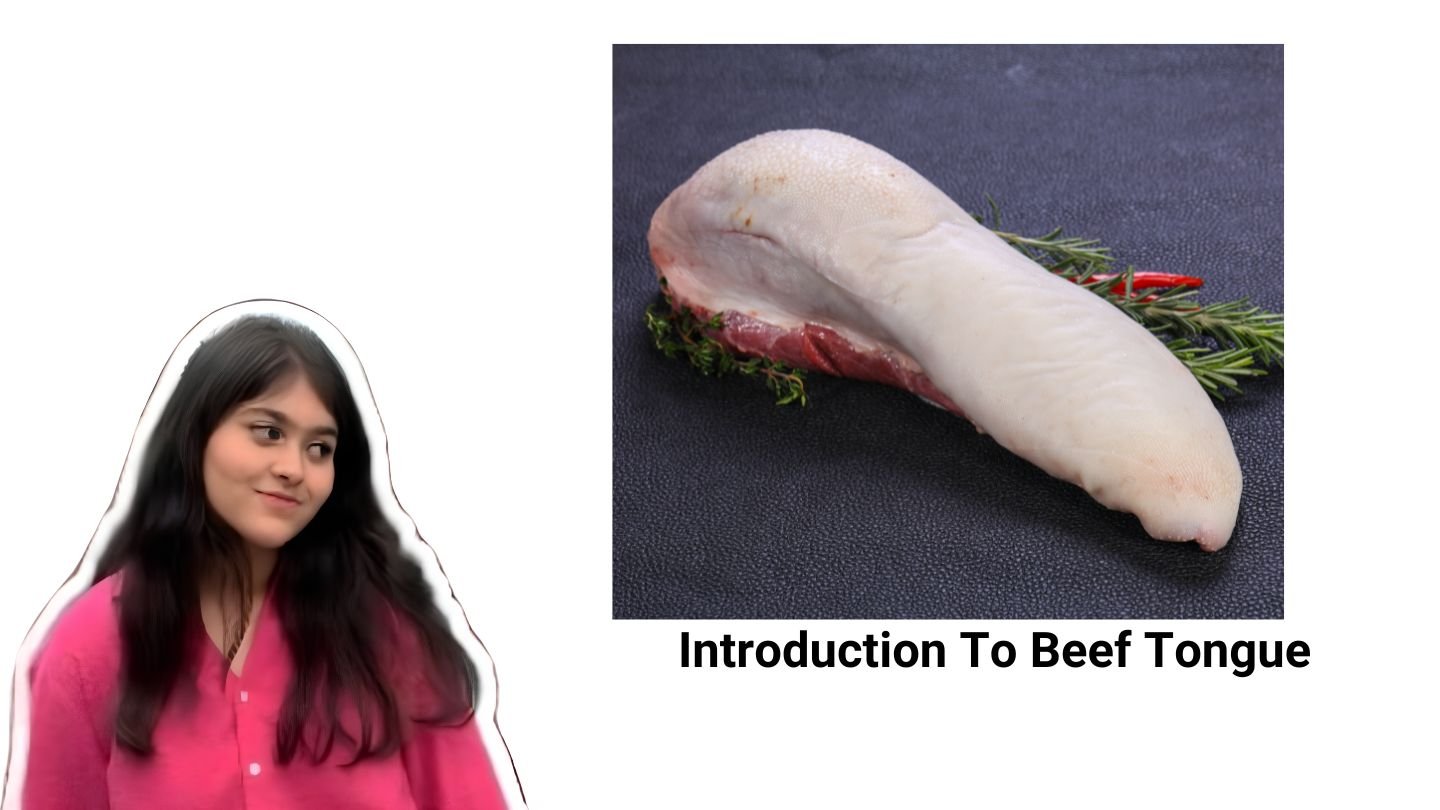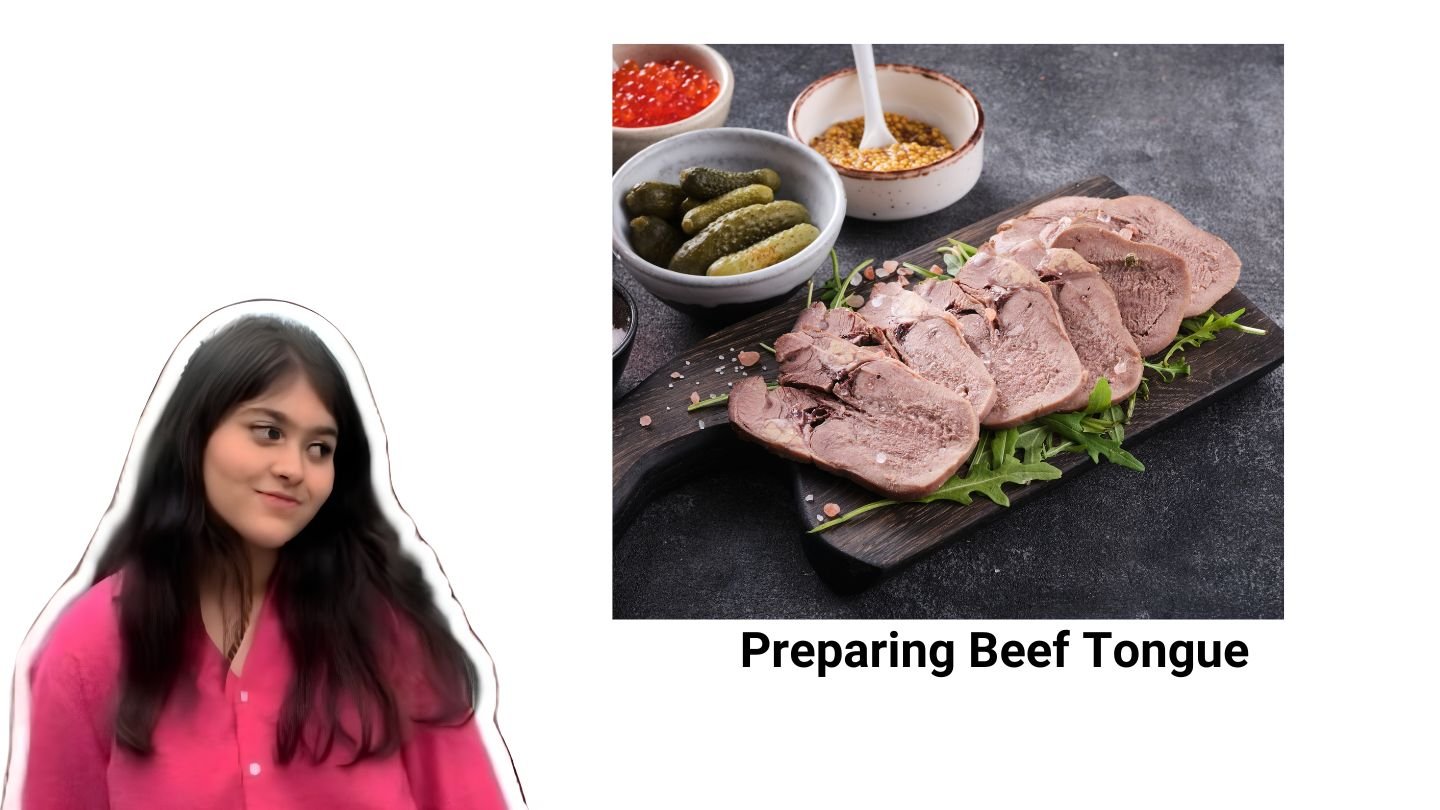Cooking beef tongue might seem daunting. Using a pressure cooker simplifies the process.
Beef tongue is a flavorful cut often overlooked. With the right technique, it transforms into a tender, delicious dish. The pressure cooker is perfect for this job. It speeds up cooking, ensuring the tongue is soft and juicy. Whether you’re a seasoned cook or a beginner, this method is foolproof.
The result? A mouth-watering meal that impresses. Ready to learn how to cook beef tongue in a pressure cooker? Let’s dive in and make this unique dish a new favorite.
Introduction To Beef Tongue

Cooking beef tongue can sound intimidating. Yet, it’s a flavorful and nutritious delicacy. Using a pressure cooker simplifies the process and ensures tender results. This guide will walk you through everything you need to know about beef tongue.
What Is Beef Tongue?
Beef tongue is a muscle found in the mouth of a cow. It’s a popular ingredient in many cuisines worldwide. The texture is unique, and the flavor is rich and beefy. This cut is often used in dishes like tacos, stews, and sandwiches.
Nutritional Benefits
Beef tongue is packed with nutrients. It’s a great source of protein, essential for muscle growth and repair. Here’s a breakdown of its nutritional content:
| Nutrient | Amount per 100g |
|---|---|
| Protein | 20g |
| Fat | 16g |
| Calories | 224 kcal |
| Iron | 2.5 mg |
| Vitamin B12 | 3.4 μg |
Additionally, beef tongue contains vital minerals like zinc and phosphorus. These nutrients support various bodily functions, including immune health and energy production.
Choosing The Right Beef Tongue

Cooking beef tongue in a pressure cooker can be a delightful experience. But first, you need to choose the right tongue. This step is crucial for ensuring a delicious and tender dish.
Selecting Fresh Tongue
When selecting beef tongue, focus on its appearance and texture. Look for a tongue that has a firm texture and a bright pink color. A fresh tongue will have a clean, mild smell. Avoid any tongue that has a grayish color or an unpleasant odor. These are signs that the tongue is not fresh and could affect the taste and safety of your dish.
Where To Buy
You can find beef tongue in various places. Your local butcher shop is a great option. Butchers often have high-quality cuts and can give you advice on preparation. Some grocery stores also carry beef tongue, usually in the meat section. Make sure to check the expiration date and quality. For a wider selection, consider visiting an ethnic market. Many Asian and Latin American markets carry beef tongue regularly. Online stores are another option. Look for reputable sellers that offer fresh and well-packaged beef tongue.
| Place | Pros | Cons |
|---|---|---|
| Local Butcher Shop | High-quality cuts, Expert advice | May be more expensive |
| Grocery Store | Convenient, Often affordable | Limited selection |
| Ethnic Market | Wider selection, Fresh products | May not be nearby |
| Online Stores | Convenient, Wide selection | Shipping costs, Freshness concerns |
Preparing Beef Tongue

Cooking beef tongue in a pressure cooker saves time and ensures tenderness. Start by cleaning the tongue thoroughly. Season and cook for 60-90 minutes.
Cooking beef tongue may seem challenging, but it’s not. Start by preparing the tongue correctly. This step is crucial for a delicious outcome. Let’s dive into the cleaning, trimming, and marinating process.
Cleaning And Trimming
Begin by rinsing the beef tongue under cold water. Remove any debris or blood. Next, use a sharp knife to trim off excess fat. Focus on the base of the tongue. This part often has more fat. Trim carefully to avoid losing meat. Pat the tongue dry with paper towels. This step ensures better marinating.
Marinating Tips
Marinating adds flavor and tenderness. Use a simple mix of olive oil, garlic, and herbs. Salt and pepper are essential. You can add soy sauce for extra depth. Place the tongue in a large zip-lock bag. Pour the marinade over it. Seal the bag and refrigerate for at least 4 hours. Overnight marinating is best. Turn the bag occasionally. This ensures even flavor distribution. “`
Ingredients Needed
Preparing beef tongue in a pressure cooker is both easy and efficient. To start, gather all the necessary ingredients. The right ingredients ensure your dish is flavorful and tender. Below, you will find a list of essential and optional ingredients.
Essential Ingredients
First, you need to get the main ingredients. These are crucial for the base flavor.
- 1 beef tongue
- 2 onions, peeled and halved
- 4 cloves of garlic, peeled
- 2 bay leaves
- 1 tablespoon of salt
- 1 teaspoon of black peppercorns
- 8 cups of water
Optional Seasonings
For added flavor, consider these optional seasonings. They enhance the taste and make your dish unique.
- 1 teaspoon of paprika
- 1 teaspoon of dried thyme
- 1 tablespoon of soy sauce
- 1 carrot, chopped
- 2 celery stalks, chopped
- 1 tablespoon of vinegar
With these ingredients, your beef tongue will be flavorful and tender. The essential ingredients create a solid base, while the optional seasonings add depth and complexity.
Setting Up The Pressure Cooker
Setting up the pressure cooker is crucial for cooking beef tongue. It ensures the meat cooks evenly and becomes tender. Follow these steps to prepare your pressure cooker for a perfect beef tongue dish.
Pressure Cooker Basics
First, gather all the necessary ingredients and tools. This includes the beef tongue, seasoning, and the pressure cooker itself. Make sure your pressure cooker is clean and in good working condition. Check the sealing ring and the pressure release valve for any signs of wear or damage. A well-maintained pressure cooker ensures safe and effective cooking.
Safety Precautions
Always read the user manual of your pressure cooker. Each model may have specific instructions. Ensure the lid is properly locked before starting the cooking process. Never overfill the cooker. Fill it only up to two-thirds of its capacity. This prevents clogging and ensures proper pressure build-up. Check the pressure release valve regularly to avoid any accidents. Always use oven mitts or a towel to handle the cooker as it can get very hot.
By following these steps, you can set up your pressure cooker efficiently and safely. This preparation will make your beef tongue cooking experience smooth and enjoyable.
Cooking Process
Cooking beef tongue in a pressure cooker can seem daunting, but it’s quite simple. This method ensures your beef tongue is tender and flavorful. Follow these easy steps to achieve a delicious result.
Step-by-step Instructions
First, rinse the beef tongue under cold water. Remove any debris or blood. Next, place the beef tongue in the pressure cooker. Add water to cover the meat completely. You can also add vegetables like onions, garlic, and carrots for extra flavor.
Season the water with salt, pepper, and bay leaves. Close the lid of the pressure cooker. Make sure the valve is set to the sealing position. Set the pressure cooker to high pressure.
Cooking Time And Pressure
Cook the beef tongue for 50 minutes under high pressure. After cooking, allow the pressure to release naturally. This can take about 15 minutes.
Once the pressure is fully released, open the lid carefully. Use tongs to remove the beef tongue from the cooker. Let it cool slightly before peeling off the skin. Slice the meat and serve as desired.
Post-cooking Steps
After cooking beef tongue in a pressure cooker, there are important steps to follow. These steps ensure the tongue is ready for consumption. The tongue needs proper handling to maintain its texture and flavor.
Cooling And Peeling
First, let the beef tongue cool down. Place it on a plate to rest for about 15 minutes. This resting period helps it cool enough for easy handling.
Once it is cool, begin peeling off the skin. The outer layer is tough and should be removed. Use a knife to start, then peel with your hands. The skin should come off easily.
Slicing Techniques
After peeling, it’s time to slice the beef tongue. Place the tongue on a cutting board. Use a sharp knife for clean cuts. Slice it thin or thick, depending on your preference.
For sandwiches, thin slices work well. For main dishes, thicker slices may be better. Ensure each slice is even for the best texture.
Serving Suggestions
Once you have cooked the beef tongue in a pressure cooker, it’s time to decide how to serve this delicious dish. This section provides creative and tasty serving suggestions to make your meal memorable. Whether you are serving for a special occasion or a casual dinner, these ideas will enhance your beef tongue experience.
Serving Ideas
There are many ways to serve beef tongue. Here are a few popular options:
- Tacos: Slice the beef tongue and add to soft corn tortillas. Top with onions, cilantro, and a squeeze of lime.
- Sandwiches: Serve thin slices on crusty bread with mustard and pickles.
- Salads: Add diced beef tongue to a mixed green salad with a tangy vinaigrette.
Accompaniments And Sides
Pairing the beef tongue with the right sides can elevate your meal. Consider these accompaniments:
| Side Dish | Description |
|---|---|
| Mashed Potatoes | Creamy and buttery, perfect for soaking up juices. |
| Roasted Vegetables | Carrots, potatoes, and bell peppers roasted with herbs. |
| Rice Pilaf | Fluffy rice cooked with onions and broth. |
These sides complement the tender and flavorful beef tongue. Enjoy experimenting with different combinations to find your favorite.
Storage And Reheating
After cooking a delicious beef tongue in your pressure cooker, you might have some leftovers. Proper storage and reheating are essential to keep the dish tasty and safe to eat. This section will guide you on how to store and reheat beef tongue efficiently.
Storing Leftovers
To keep the beef tongue fresh, store it in an airtight container. Place it in the refrigerator if you plan to eat it within three days. For longer storage, consider freezing.
- Refrigeration: Store in a container and consume within 3 days.
- Freezing: Wrap tightly in plastic wrap and place in a freezer-safe bag. Use within 3 months for best quality.
Reheating Tips
Reheating beef tongue properly ensures it remains moist and flavorful. Here are some tips:
- Microwave: Place slices in a microwave-safe dish. Cover and heat on medium power for 2-3 minutes. Check and stir halfway.
- Stovetop: Heat a little broth in a pan. Add the beef tongue slices. Cover and heat on low, stirring occasionally, until warmed through.
- Oven: Preheat to 350°F (175°C). Place slices in a covered baking dish. Add a splash of broth. Heat for 10-15 minutes.
By following these storage and reheating tips, you can enjoy your beef tongue dish again without losing its delicious flavor and texture.
Frequently Asked Questions
How Long To Cook Beef Tongue In A Pressure Cooker?
Cook beef tongue in a pressure cooker for 60-90 minutes. This depends on the size and thickness. Always check tenderness before serving.
Do You Need To Peel Beef Tongue Before Cooking?
No, you do not need to peel it before cooking. The outer skin will easily peel off after it’s cooked.
What Spices To Use For Beef Tongue?
Use bay leaves, garlic, onions, and peppercorns. These spices enhance the flavor of the beef tongue.
Can You Overcook Beef Tongue In A Pressure Cooker?
Yes, you can overcook beef tongue. Overcooking can make it tough. Monitor cooking time closely.
Conclusion
Cooking beef tongue in a pressure cooker is easy and rewarding. The pressure cooker saves time and makes the tongue tender. Follow the steps, and you will have a delicious dish. Enjoy the unique texture and flavor of beef tongue.
It pairs well with many sides and sauces. Give it a try and surprise your family. Happy cooking!

Hey, I’m Nandoza Ahammad, passionate food enthusiast and creator of narzcookingcave.com, shares delicious recipes and cooking tips worldwide.

